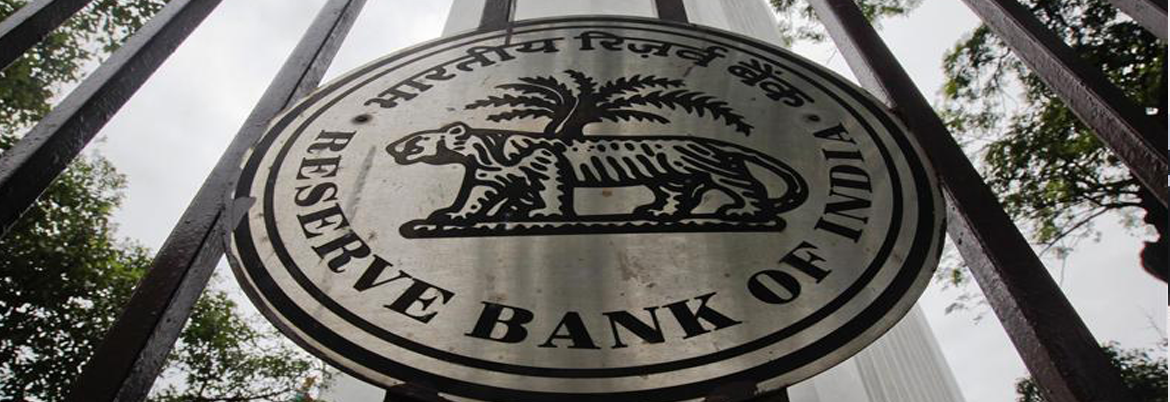Reserve Bank of India (RBI) and its historic role - Part2
- In Economics
- 12:43 PM, Jun 19, 2016
- Pramod Kumar Buravalli
The first part of the article https://www.myind.net/reserve-bank-india-rbi-and-its-historic-role talks about the earlier avatar of the Reserve Bank of India (RBI). In the first five decades of the 20th century till India’s independence, per capita GDP was stagnant, as the trend growth in GDP during this period was 0.9 per cent with population growing by about 0.8 per cent. As compared with the near stagnant growth in the first 50 years of the 20th century, the annual growth averaged at around 3.5 per cent during the period 1950 to 1980. The average growth rate of the Indian economy over a period of 35 years since 1980-81 was about 6.0 per cent – a significant improvement over the annual growth rate of the previous three decades.
Since independence, the inflation rate, in terms of the wholesale price index (WPI), on average basis, was above 15 per cent in only five out of fifty years and was in single digit for thirty six of these years. On most occasions, high inflation was due to shocks – food or oil.
The inflation rate accelerated steadily from an annual average of 1.7 per cent during the 1950s to 6.4 per cent during the 1960s and further to 9.0 per cent in the 1970s before easing marginally to 8.0 per cent in the 1980s. The inflation rate declined from an average of 11.0 per cent during 1990-95 to 5.3 per cent during the second half of 1990s. The high inflation during UPA-2 regime now seems headed to an all-time low due to falling global oil prices.
An important characteristic of the growth phase for over a quarter century is India’s resilience to external shocks. During this period, India witnessed only one serious balance of payments crisis triggered largely by the Gulf war in the early 1990s. The Indian economy, in the later years, could successfully avoid any adverse contagion impact of shocks from the East Asian crisis, the Russian crisis during 1997-98, sanction-like-situation post-Pokhran-2, and the Kargil War in 1999.
The phasing out of automatic monetization of fiscal deficits by 1997 and the enactment of the Fiscal Responsibility and Budget Management (FRBM) legislation in 2003 were two very important milestones in the direction of providing safeguards to monetary policy from the consequences of expansionary fiscal policy and ensuring a degree of autonomy to the RBI. Consequently, barring emergencies, there are limits to the ways and means to advances by the RBI to the Government and prohibition on RBI from participating in primary issuance of all government securities.
RBI also contributes to the exchequer by way of transfer of balance of its annual profits, after making provisions and transfers to its Reserves. The general principles regarding such transfers were rationalized as part of the reform process in 1997. The present arrangement is governed by the objective of strengthening the RBI balance sheet by achieving a stipulated level of Reserves in the balance sheet over a period – though the time-frame to achieve the level is extended to accommodate immediate fiscal compulsions.
Raghuram Rajan, Budget 2015 Implications and what’s in store for the Indian Economy
The Reserve Bank of India left the benchmark repo rate at 7.75 percent in Feb 2015, as policymakers waited for more evidence of last month's rate cut and indicated that the key to further easing are continuing disinflationary pressures and sustained fiscal consolidation.
The cash reserve ratio was left on hold at 4 percent of net demand and time liabilities (NDTL). Policy makers also decided to: reduce the statutory liquidity ratio (SLR) by 50 basis points to 21.5 percent since February 7th; replace the export credit refinance (ECR) facility with the provision of system level liquidity since February 7th; continue to provide liquidity under overnight repos at 0.25 percent of bank-wise-NDTL at the LAF repo rate and liquidity under 7-day and 14-day term repos of up to 0.75 per cent of NDTL of the banking system through auctions and continue with daily one-day term repos and reverse repos to smooth liquidity. Consequently, the reverse repo rate under the LAF will remain unchanged at 6.75 percent, and the marginal standing facility (MSF) rate and the Bank Rate at 8.75 percent.
Retail inflation, measured by year-on-year changes in the consumer price index (CPI), edged up in December 2014 on the expected reversal of favorable base effects that had tempered upside pressures since June. A slight softening of cereal prices and a sharp seasonal fall in vegetables prices moderated the trajectory of headline inflation, despite persistent firmness in the prices of protein-rich items such as milk, meat and pulses. Seasonal increases in vegetable prices, typically set in around March, are also monitored by the RBI. In the fuel category, prices of constituents such as electricity, coal and cooking gas remain stable in the absence of administered revisions. Consequently, the CPI has registered a monthly decline for the first time since February 2014.
By and large, inflation dynamics have so far been consistent with the assessment of the balance of risks by the Reserve Bank’s bi-monthly monetary policy statements, although with some undershooting relative to the projected path of disinflation. While inflation declined faster than expected due to favorable base effects during June-November, the upturn in December turned out to be muted relative to projections. Augmenting these data with survey data on falling inflationary expectations as well as data on weak commodity prices and muted rural wage growth, the Reserve Bank projected that it would meet its objective of 6 per cent CPI inflation by January 2016. Having committed in public statements to initiate a change in the monetary policy stance as soon as incoming data permitted, the Reserve Bank cut the policy rate on January 15, 2015.
Summary
The outlook for growth has improved modestly on the back of disinflation, real income gains from decline in oil prices, easier financing conditions and enormous progress on stalled projects.
These conditions augur well for a reinvigoration of private consumption demand, but the overall impact on growth could be partly offset by the weaker global growth outlook and short-run fiscal drag due to likely compression in plan expenditure in order to meet consolidation targets set for the year.
For 2015-16, projections are contingent upon the outlook for the south-west monsoons and the balance of risks around the global outlook. Domestically in India, conditions for growth are slowly improving with easing input cost pressures, supportive monetary conditions and recent measures relating to rapid project approvals, land acquisition, mining auctions, and infrastructure funding.
The budget for 2015 presented by Shri Arun Jaitley on 28th February if combined with easing interest rates could become the harbinger of several positive things to come in the near future. Hope the RBI and Government of India will continue to work in tandem towards a higher purpose.
Click here for Part1 of this Article https://www.myind.net/reserve-bank-india-rbi-and-its-historic-role.







Comments